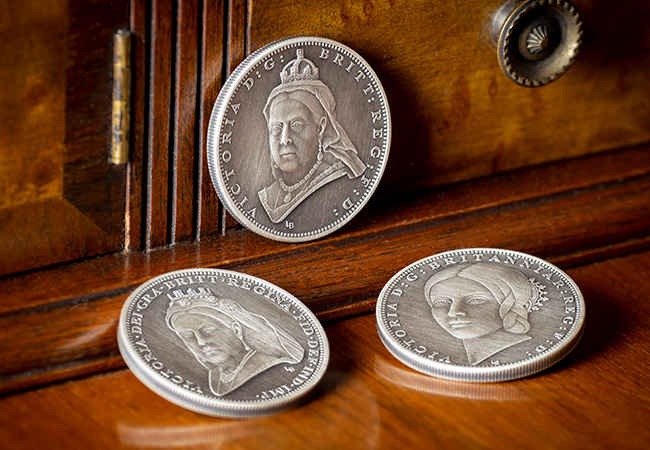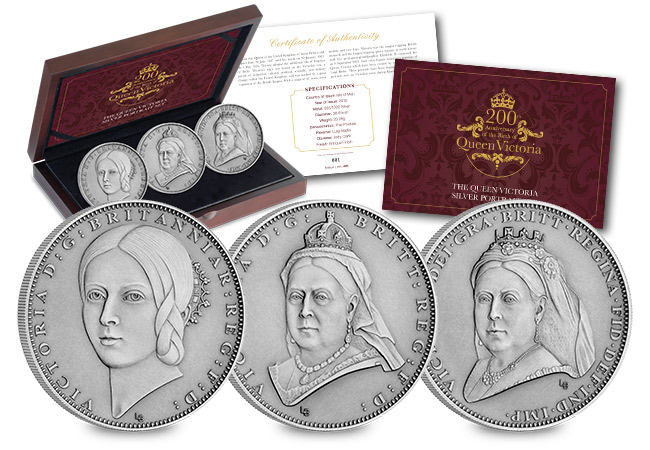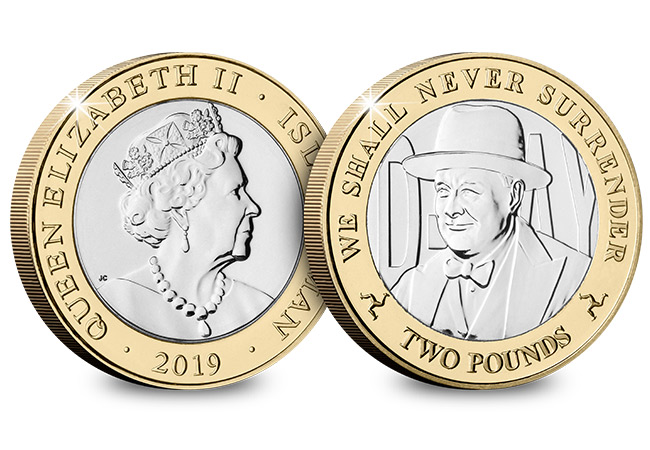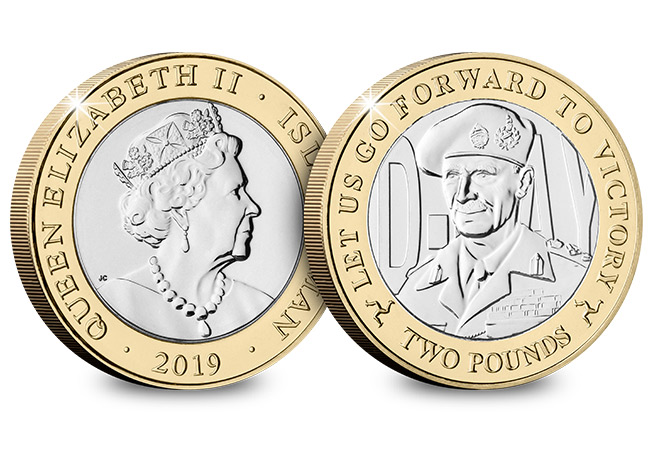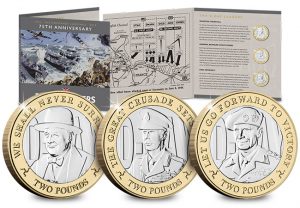Posts by Chris Bowditch
What goes in to developing not one but THREE brand new portraits…
It’s surprising, in this new digital age, just how ‘hands-on’ designing a coin is. In fact, it’s very much the job of a master craftsman.
Never was this more evident than when the Isle of Man Treasury chose to mark the 200th Anniversary of the birth of Queen Victoria with three new coins, each with a brand new portrait.
The man they turned to was renowned sculptor Luigi Badia and here’s the remarkable process of how these coins were developed.
First Stage – Pencil designs
Like most products across all industries, designing a coin starts with pencil sketches. These are then amended, potentially many times, until a final sketch is produced and approved.
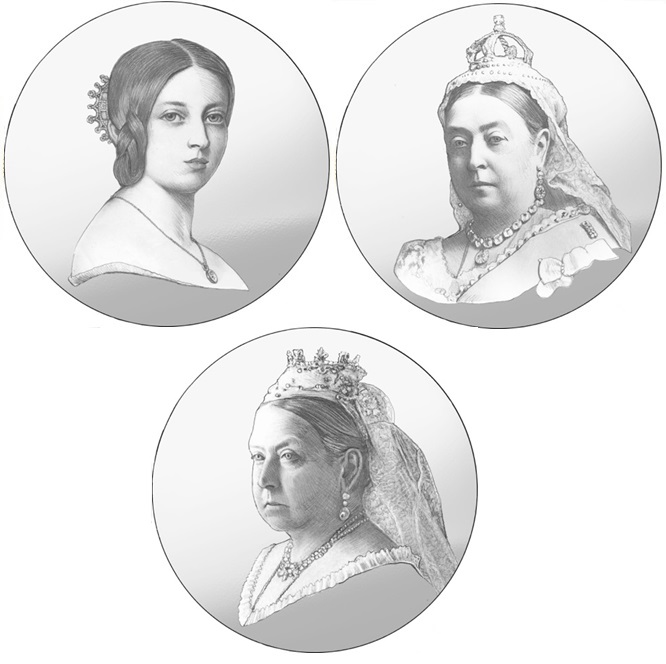
Second Stage – Plaster modelling
The second stage is arguably the most visually stunning. The sculptor, Luigi Badia in this case, will turn their sketches into a 3D ‘Plaster’ design. The skill involved in this process is really very impressive as every tiny detail must be modelled.
The plaster is far larger than the actual coin size to allow for this detail to be captured. The design will be resized in the next step of the process.

Third Stage – Digital Modelling
It’s during this stage where technology has certainly helped the design process. The 3D ‘Plaster’ designs are scanned and a digital file, called a greyscale, is created.
An engraving machine then uses this file to cut the design into a piece of steel that’s the actual size of the final coin. This will then be used to make the dies that will actually strike the coins.
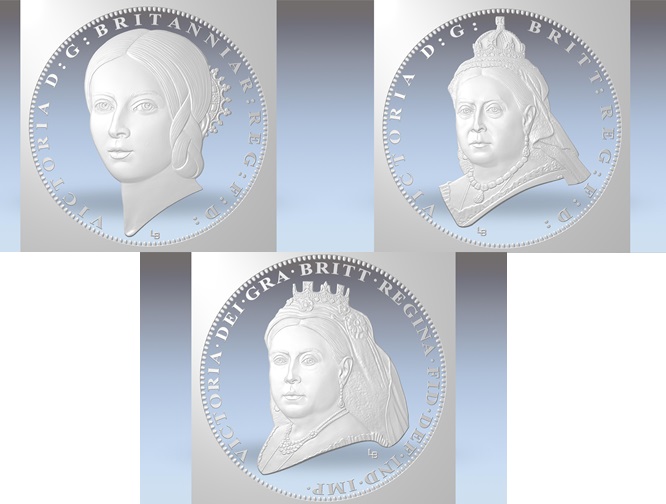
Fourth Stage – Coin Striking
This final stage is when the physical coin comes to life. The specially prepared die is used to ‘strike’ the design onto a metal ‘blank’. The metal used for the blank can vary widely, from cupro-nickel to silver and gold.
Only once the mint is perfectly happy with the quality of the struck coins will they be issued.
The Queen Victoria Silver Antique £5 Set
This set is the only way to own all three of these stunning, specially commissioned Antique Silver £5 Coins.
Just 495 of these stunning sets are available worldwide and exclusive to The Westminster Collection.
You can secure yours today for a down payment of just £54 >>
New coins issued to commemorate the three leaders who inspired an Allied victory
2019 marks 75 years since the Normandy Landings which took place on 6th June 1944, also known as D-Day. It was the largest seaborne invasion in history. The operation laid the foundations of the Allied victory on the Western Front and the subsequent liberation of Nazi-controlled Europe.
Three of the most influential people during Operation Neptune (AKA D-DAY), and World War II in its entirety, were Winston Churchill, Field Marshal Bernard Montgomery and of course, King George VI. Each of these historical figures played a vital role in the Allied victory and delivering speeches that inspired the nation and boosted morale in the trenches and on the battlefield. Below we take a look at the part they played, as well as those monumental speeches.
WINSTON CHURCHILL
For Winston Churchill, D-Day 6th June 1944 was the culmination of four years of struggle, hardship and frustration. Shortly after the evacuation of Dunkirk in 1940, Churchill had started planning for the invasion of Europe. At the time it was no more than a dream, with Britain expecting an imminent invasion by Germany. With the entry of the USA into the war, Stalin urging the opening of a second front and Britain’s growing military power and confidence, the dream became a reality. Churchill had rallied his stricken country. Now he was about to lead them to victory.
“We shall go on to the end, we shall fight in France, we shall fight on the seas and oceans, we shall fight with growing confidence and growing strength in the air, we shall defend our Island, whatever the cost may be, we shall fight on the beaches, we shall fight on the landing grounds, we shall fight in the fields and in the streets, we shall fight in the hills; we shall never surrender, and even if, which I do not for a moment believe, this Island or a large part of it were subjugated and starving, then our Empire beyond the seas, armed and guarded by the British Fleet, would carry on the struggle, until, in God’s good time, the New World, with all its power and might, steps forth to the rescue and the liberation of the old”.
Winston Churchill – 4th June 1944
Field Marshal BERNARD MONTGOMERY
By D-Day, Field Marshall Montgomery had proved to be a great and inspirational leader, one of the finest and most experienced battlefield generals of World War II. In 1942 he was made commander of the 8th Army and led them to victory in North Africa and on into the invasion of Italy. For D-Day, and the subsequent battle for Normandy, Montgomery was made commander of all Allied ground forces. Despite setbacks, he once again showed his outstanding qualities of leadership. On 4th May 1945 Montgomery accepted the German surrender at Luneburg Heath. He later served as NATO’s Deputy Supreme Allied Commander until 1958.
“On the eve of this great adventure I send my best wishes to every soldier in the Allied team. To us is given the honour of striking a blow for freedom which will live in history; and in the better days that lie ahead men will speak with pride of our doings. We have a great and a righteous cause. Let us pray that “The Lord Mighty in Battle“ will go forth with our armies, and that his special providence will aid us in the struggle. I want every soldier to know that I have complete confidence in the successful outcome of the operations that we are now about to begin. With stout hearts, and with enthusiasm for the contest, let us go forward to victory“.
General Bernard Montgomery – 5th June 1944
KING GEORGE VI
On 6th June 1944 George had been King just eight years, ascending the throne in December 1936. For almost five of those years his country had been at war. Despite coming unexpectedly to the throne and his pronounced speech impediment, he had proved a popular and inspirational leader. He remained in Britain to face the horrors of the blitz and the hardships of war with his people, a calming and steadfast figure through the years of peril. On the evening of D-Day, George VI spoke to the people of Britain and the Empire and Commonwealth of the need to pray, not now for survival, but for victory.
“At this historic moment surely not one of us is too busy, too young, or too old to play a part in a nationwide, a worldwide vigil of prayer as the great Crusade sets forth. If from every place of worship, from home and factory, from men and women of all ages and many races and occupations, our intercessions rise, then, please God, both now and in the future not remote, the predictions of an ancient song may be fulfilled: “The Lord will give strength unto His people, the Lord will give His people the blessing of peace”.
King George VI – 6th June 1944
To mark the 75th anniversary we are proud to announce we have issued a strictly limited Brilliant Uncirculated £2 Coin Set – click here to see more information on the D-Day 75th Anniversary Leaders Three Coin Set >>
Discover the coins that built the British Empire
The East India Company is living proof of Sir Walter Raleigh’s (1614) prophetic words: “whosoever commands the sea, commands the trade, whosoever commands the trade of the world commands the riches of the world and consequently the world itself,” as they rapidly became a trading force to be reckoned with.
And coins were one of the key ways the company managed trade across the globe.
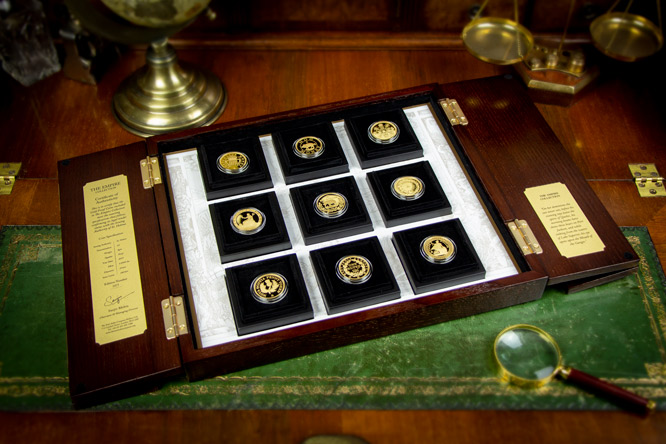
At its peak the EIC was single-handedly responsible for half the world’s trade, including cotton, silk, spices, opium and tea.
Remarkably, the East India Company is still trading today. And they have just authorised a set of limited edition Gold coins paying tribute to the most important coins in their history.
Here is the story behind the coins…
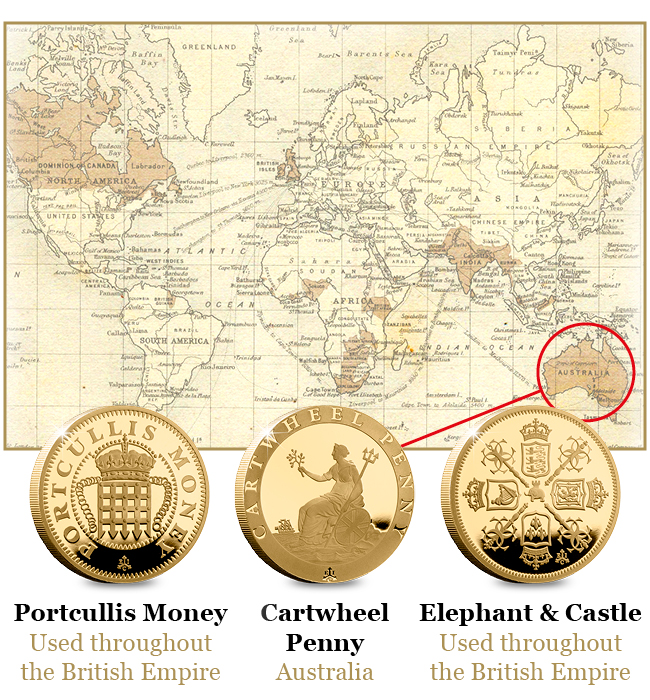
Portcullis Money – 1601 (Throughout the Empire)
Ordered by Queen Elizabeth I to facilitate increased commerce on behalf of the British Crown and to compete against the widely used Spanish Real. These were the first coins issued for the British Empire outside of England’s normal coinage.
The Cartwheel Penny – 1797 (Australia)
The Cartwheel Penny was the first British coin to be exported to Australian Colonies. It was introduced to help curb Britain’s chronic coin shortage which was impacting economic growth. Specially designed to prevent counterfeiting, and the thick rim and inscription led to the pennies being informally named ‘The Cartwheel Penny’.
The Elephant and Castle Guinea – 1663 (Throughout the Empire)
The guinea is regarded as the most successful trade coin, exponentially increasing British and local trade wherever it was introduced. This Guinea was the first British machine-struck coin, and adopted its name from where the gold was mined from.
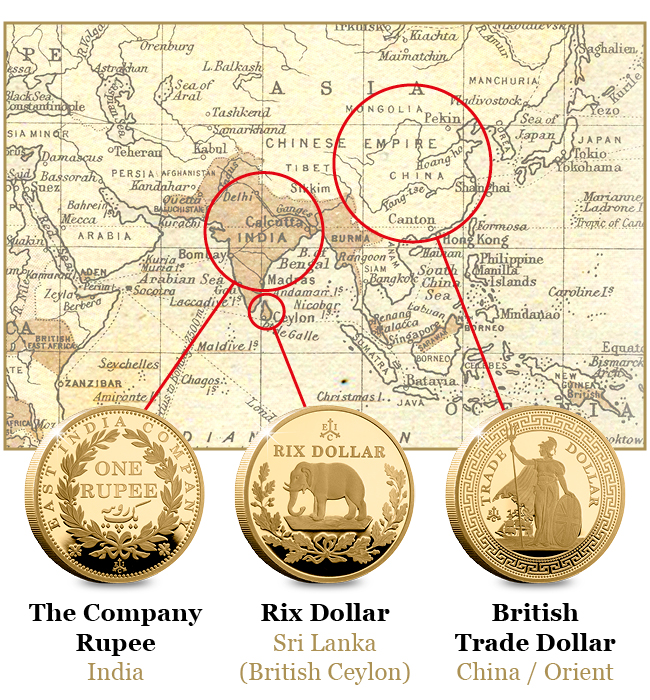
The Company Rupee – 1833 (India)
The Rupee is one of the world’s oldest systems of money. It was adopted by the East India Company upon its arrival in the East, and soon became one of the company’s most important coins and means for trade. In 1833 reforms to the Indian weights and measures led to coinage in India changing from the Sicca to the standard ‘Company Rupee’.
The Rix Dollar – 1821 (Sri Lanka)
Great Britain sought to develop Ceylon’s (Sri Lanka’s) economy and increase trade to and from Europe. As a part of this aim The Rix Dollar was struck specifically for use in Ceylon. Designed by Benedetto Pistrucci, who is also responsible for the now iconic rendition of St. George slaying the Dragon which features on British Sovereigns.
The British Trade Dollar – 1839 (The Orient)
To facilitate the trade of their most lucrative commodities, namely tea and opium a trading post in Canton, China was established. During the Trade Wars Great Britain found itself having to rely more and more on its own silver coinage, and this paved the way for one of the most distinctive silver British coins in numismatic history to be struck: the British Trade Dollar.
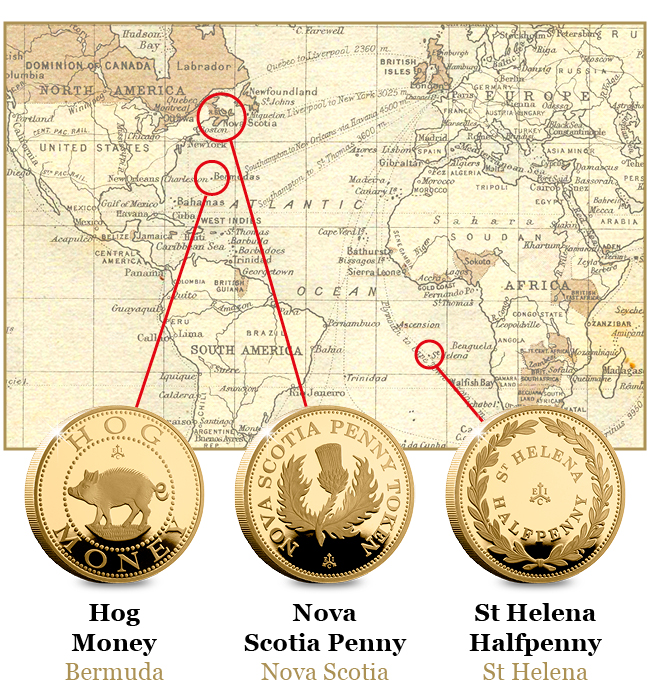
Hog Money – 1609 (Bermuda)
In order to develop Bermuda’s prosperous economy King James I granted permission to mint coins, which resulted in the issuing of Hog Money, inspired by the wild hogs previously introduced to the island, it’s the first English coin to be minted specifically for use in North America.
The St Helena Halfpenny – 1821 (St Helena)
In 1815 St Helena’s economy benefited from the arrival of the former French Emperor, Napoleon, during his second exile, as the famous prisoner brought with him an entourage of British troops, effectively doubling the islands population and prosperity. As the economy swelled, St Helena’s first local coins were introduced.
The Nova Scotia Penny – 1823 (Canada)
Prior to the Canadian Confederation in 1867 many provinces issued their own coinage. However in 1823, without seeking official approval from the Home Office, the province of Nova Scotia ordered the issuing of coins. The coins, issued in denominations of one pennies and halfpennies, contributed to the expansion of local commerce in Nova Scotia.
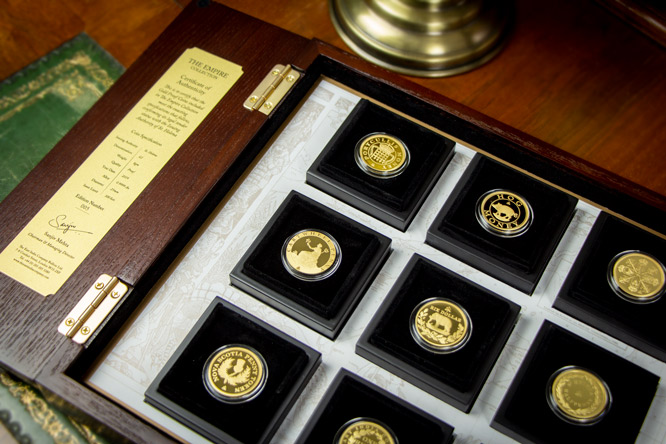
The 2019 Empire Collection
For this exceptional 2019 issue collectors will be taken on a journey to the far flung corners of the world. Retracing the steps of the East India Company, to discover some of the most significant coins which have helped build an empire stretching across three centuries from 1600 to the Victorian Era.
Finished to an exceptionally high standard, the 2019 collection truly represents the global resonance of The East India Company and these significant coins. There is no doubt the 2019 Empire Collection is going to become a future collector priority.
If you are interested…
Out of a Worldwide edition limit of just 100 we have a small stock of the 2019 Empire Collection available. If you are interested in owning a set – please complete the form below and we will contact you directly.

